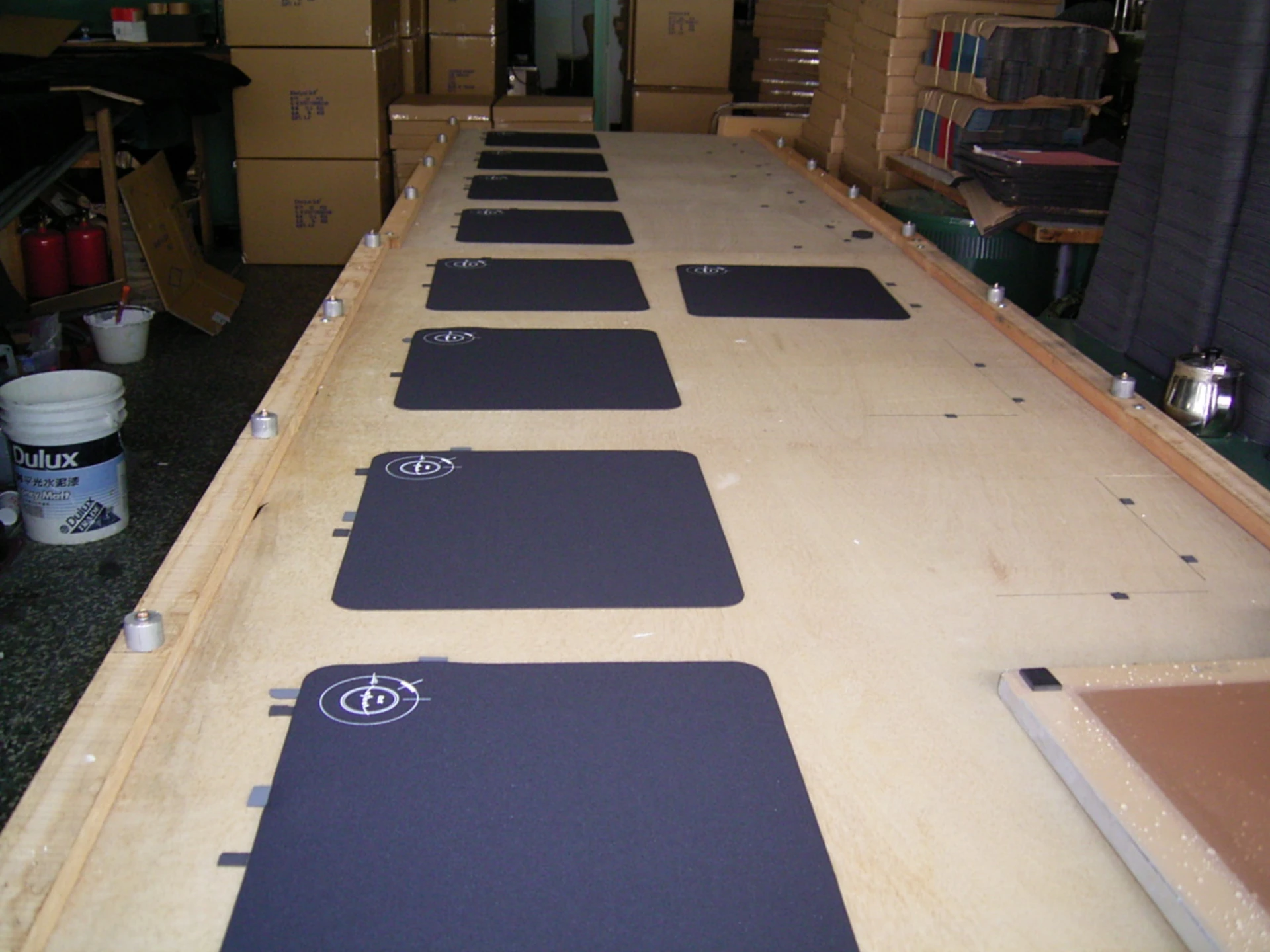
The Evolution of SteelSeries Mousepads
An ever-changing development process

As we celebrate 10 million mousepads, SteelSeries OG's Rasmus, Jacob, Jason, and Tino reflect on our 17 years of perfecting gaming mousepads.
##Icemat: The First Gaming Mousepad Back in 2001, the Icemat was the world's first glass mousepad. It was not just our first mousepad, but our first product ever. It was glass because it would attract less dust and dirt, which was imperative for tracking rollerball mice, and kept the sensitivity consistent (every time you had to clean out the dust and dirt, meant it was a totally different mouse again). It had an acid-treated surface that gripped the rollerball mice of the time, and because it was glass the surface was very durable and easy to clean.

We dug this relic out of cold storage.
Every single Icemat was produced in Denmark where we were headquartered, which allowed us to be very hands-on with production and also work with small local suppliers.
Back then, the company was called Soft Trading (sexy….we know), and shortly after the Icemat was introduced, we unveiled the SteelPad made from...you guessed it: steel. Over the years we tinkered and tested, and introduced new materials like aluminum, plastic coating, stitched, cloth, multilayers etc. Then, in 2007 we became SteelSeries.
##How did we go from glass to cloth? As the popularity of the rollerball mice fell, we started with other types of hard materials like polycarbonate and acrylic. We released products made from steel, as well as anodized aluminum, all before we did cloth pads.
Cloth was something that already an accepted material for mousepads, however when we tried to set up production we quickly discovered that it wouldn’t be so easy. Back then, cloth mousepads were only produced as basically freebies that came with computers, handed out at events, etc. Unsurprisingly, the production of cloth mousepads was set up for fast, mass production without any real concern for quality or consistency. We would always see flaws in the samples we received - large air bubbles, height variations, and bumps in the surface. All things that are perfectly acceptable for a mousepad you are given for free and that you’d probably use for office use more than anything. However, we knew that our customers had different expectations - it was really important that a mousepad was consistent and reliable. The real problem was the fact that no manufacturer was able to guarantee us the quality we needed (even when we offered two or three times the cost).
What we did was to hire our own staff to oversee production quality, so we could check and sort products directly after they left the production line. We had to pay for every single product produced, but it was worth it to make sure we were getting consistent quality. Luckily, natural rubber can be recycled, or there have been a terrible waste of mousepads that didn’t meet our quality standards. In time our production partners gained the skills to do the sorting themselves (although we still have our own quality control on the ground, even to this day).
##So what is the best mousepad material? There are so many variables that go into materials and design that can make a huge different. Of course the pad has to provide good steady tracking for the sensor in the mouse. This is key, and to be able to achieve that you need to understand a little about how mouse sensors work.
A mouse sensor is basically a little camera. It takes pictures of the surface it sits on thousands of times per second. It is only a black and white camera, and the resolution is actually pretty low. Like all cameras it needs light, so we provide a light source in the shape of either an LED or a tiny laser. The camera constantly takes pictures and compares them to each other, and by doing that its able to determine if the mouse has moved or not - pretty simple.
So for the mouse surface, it’s important that it creates some patterns that can easily be picked up by the camera. This is why a mouse has a hard time working on glossy surfaces; there are no patterns to pick up. The area the camera looks at is defined by a lens and it is very small and therefore the patterns that mousepad needs to have should be very small. So all good mousepads will have “micro textures” - on the cloth pads its generated by the interwoven fibers and on hard pads it is done by finely textured plastics or in the rare case of the Icemat; acid treatment on glass.
Aside from that, a good mousepad also needs to be durable. If a mousepad meets these standards, we like it! There is no such thing as “the perfect mousepad" - when it comes factors like size, thickness, and even RGB, that's totally up to your own preference.
The 10 MILLION MOUSEPAD CELEBRATION is our way of saying thank you to our community for helping us get this far.

Zach is an esports dinosaur having competed at MLG tournaments from 2005-2009. After hanging up the controller, he went on to produce content for the likes of MLG, Machinima, and ESL. He now currently resides on the global marketing team here at SteelSeries and somehow got roped into creating this blog post you just read.